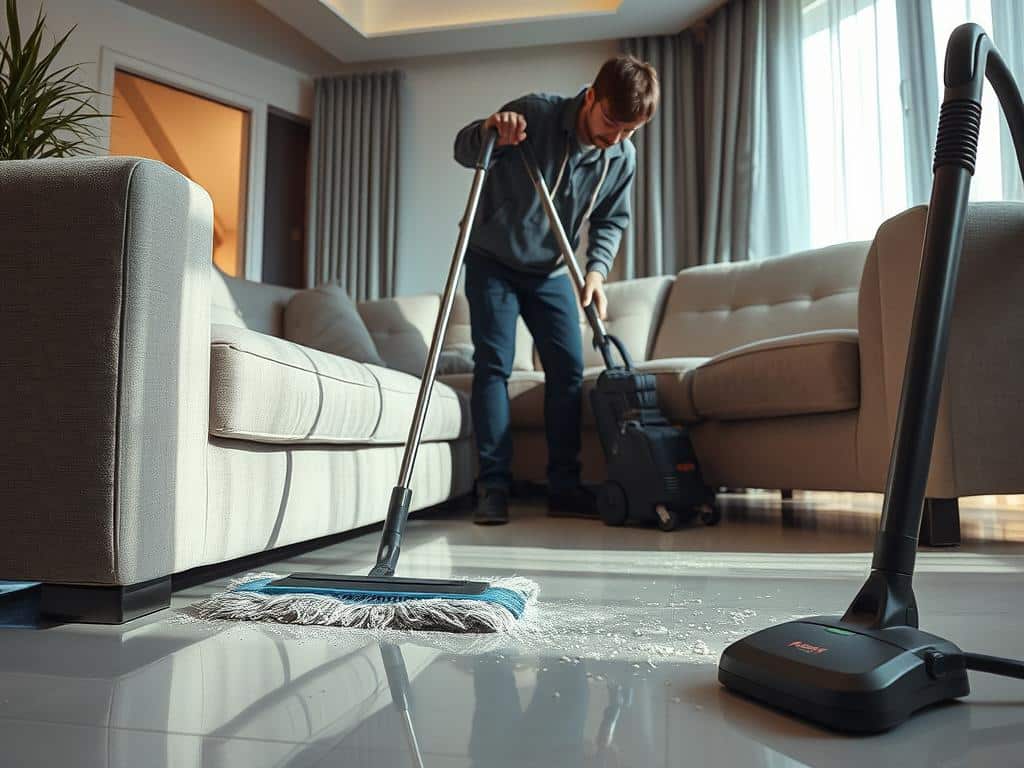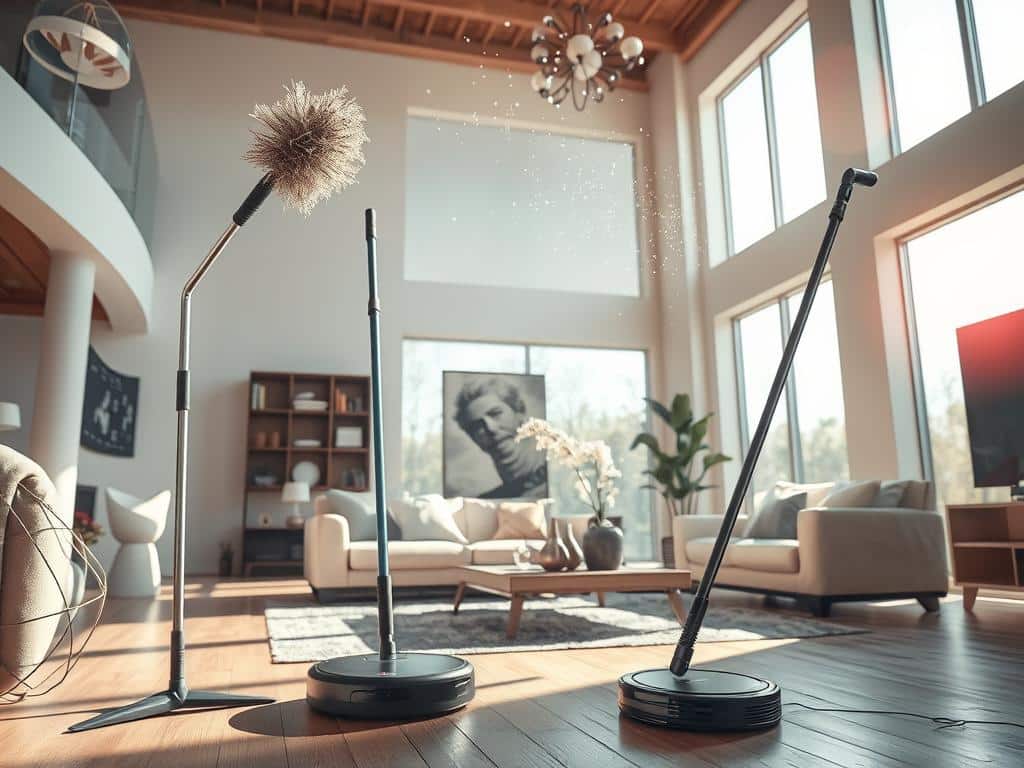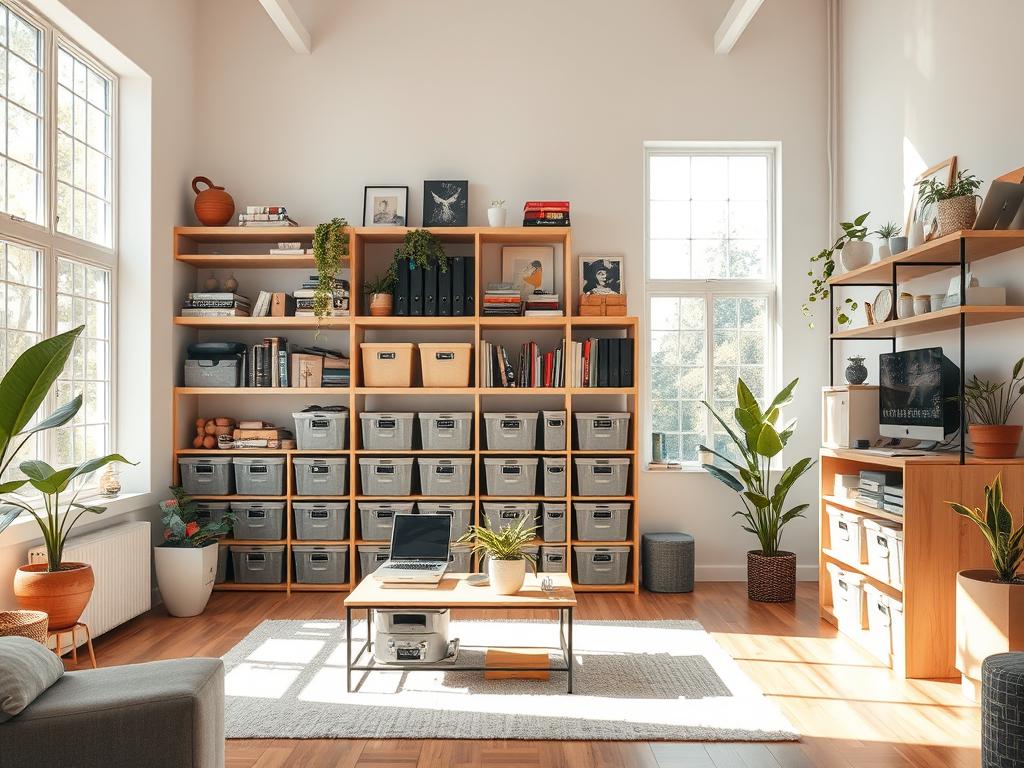
Maintaining a clean home is no easy task, especially when it comes to the often-neglected areas under heavy furniture. Regular cleaning of these spaces not only enhances indoor cleanliness but also plays a crucial role in allergen reduction and ensuring better indoor air quality. This task becomes more manageable with the right furniture cleaning techniques.
Traditional items, such as sofas, cabinets, and entertainment units, can obstruct routine cleaning routines. Utilizing extendable, bendable dusters and vacuum cleaners with long nozzles can simplify the process. For homes with fewer occupants, cleaning under heavy furniture every 2-3 weeks is generally sufficient. However, households with more occupants, pets, or hardwood floors should aim to clean these areas every 1-2 weeks.
Dust accumulating under heavy furniture can house mold, fibers, stale food particles, and tiny mites. This not only triggers allergies but also impacts respiratory health. Statistics indicate that regular cleaning significantly minimizes these elements, contributing to a healthier home environment. Specialized techniques, like moving furniture with furniture jacks or using risers, can facilitate thorough cleaning underneath. Leveraging felt pads for furniture feet can also protect your floors during this process.
Combining damp and dry dusters is recommended to ensure comprehensive dust removal. Cleaning one corner at a time and tilting furniture you can’t fully move can make the task less daunting. Following these steps, you contribute to a cleaner, healthier living environment, free from allergens and better indoor air quality.
Why It’s Important to Clean Under Heavy Furniture
Cleaning under heavy furniture is not merely about maintaining a tidy appearance; it also has significant health benefits. Dust and debris accumulating in these hidden spaces can pose severe health risks. It is essential to understand the three primary reasons why maintaining a dust-free living environment is crucial.
Health Benefits of a Dust-Free Home
A dust-free living environment offers numerous health advantages. Dust buildup under furniture can exacerbate or trigger asthma attacks, allergic reactions, and respiratory distress. Inhaling dust frequently is associated with a heightened risk of severe health complications such as heart disease, lung cancer, stroke, chronic obstructive pulmonary disease, and lower respiratory infections. Regular cleaning under furniture ensures these health risks are minimized, maintaining a safer home atmosphere.
Impact on Allergies and Respiratory Issues
Dust accumulation often contains allergens such as pet dander, dust mites, and pollen, which can severely impact individuals with allergies. By cleaning under heavy furniture regularly, you reduce the presence of these allergens, providing substantial allergy relief. Additionally, this practice helps prevent respiratory issues by keeping your environment free from harmful particles that might exacerbate conditions like asthma or chronic bronchitis.
Maintaining Indoor Air Quality
Indoor air quality plays a pivotal role in overall health. Accumulated dust and debris under furniture can significantly degrade the air you breathe at home. Excessive dust can strain HVAC systems, reducing their efficiency and lifespan. Approximately two-thirds of household dust comes from outdoor sources, highlighting the need to clean frequently and change furnace air filters regularly. Investing in vacuums with HEPA filters can further enhance air quality by trapping dust and airborne particulates. Those efforts ensure a consistently clean indoor air environment, allowing you to breathe easier and stay healthier.
Essential Tools for Cleaning Under Heavy Furniture
Cleaning under heavy furniture calls for specific cleaning tools designed to facilitate dust removal and ensure safe furniture handling. With the right equipment, you can easily maintain a dust-free environment beneath your furniture without risking injury or damage to your belongings.
Electrostatic Extension Dusters
Electrostatic extension dusters are perfect for dust removal. Equipped with statically charged fibers, these dusters attract and collect dust, hair, and pet fur effortlessly. They often feature bendable heads, which can be angled between 100-120 degrees, making it easier to reach under furniture.
Furniture Jacks for Safe Movement
Furniture jacks are invaluable for safe furniture handling. They allow you to lift heavy items without straining your back or damaging floors. Simply position the jack under the furniture leg, lift, and clean thoroughly beneath with ease.
Vacuum Cleaners with Long Nozzles
Vacuum cleaners equipped with long nozzles or crevice attachments are essential. They help in reaching tight spots and removing accumulated dirt effectively. Rechargeable robotic vacuums can also be highly effective for cleaning under very low furniture like the Keaton Performance Fabric 3-Seater Sofa.
Microfiber Mops and Cloths
Microfiber mops and cloths are ideal for both dry and damp dust removal. They are highly effective at trapping dust and ensuring a thorough clean. Using a slightly damp microfiber cloth followed by a dry duster can provide a streak-free finish, making it a staple in your array of cleaning tools.
- Weekly cleaning under the furniture is now conducted, as opposed to daily cleaning previously recommended by the pediatrician.
- Dust removal often starts with sweeping, then dragging out contents, tapping the electrostatic duster head, and shaking it to dislodge dirt and hair.
- Items less than eight inches tall may need to be moved for occasional deeper cleanings.
- Measure clearances beforehand to choose the best cleaning tools.
- After dust removal, follow up with vacuuming and mopping for best results.
For more insight into the best dusting tools, these guidelines can help you select the appropriate cleaning tools, ensuring safe furniture handling and effective dust removal from those hard-to-reach spots.
Effective Methods for Cleaning Under Heavy Furniture
Understanding efficient cleaning methods for accessing spaces under heavy furniture can significantly streamline your cleaning process. Different techniques can be applied depending on the type of furniture and the extent of cleaning required. In this section, we’ll delve into various approaches to ensure a clean and dust-free environment beneath your home’s heaviest pieces.
Sweep, Drag, Tap, and Shake Technique
The sweep, drag, tap, and shake technique is a comprehensive method for revitalizing the areas under your heavy furniture. This technique involves using a duster with a long, extendable handle to:
- Sweep: Reach under the furniture to sweep away loose dust and debris.
- Drag: Pull out the duster to collect the dirt.
- Tap: Gently tap the duster on a hard surface to dislodge trapped particles.
- Shake: Shake off the remaining dirt from the duster before the next use.
This method is particularly useful in high-traffic areas such as living rooms, dining rooms, and bedrooms. By incorporating these steps, you can maintain cleanliness and address the hidden dirt often found when moving out or during periodic cleanings.
Using Microfiber Wands and Detailing Brushes
When tackling more intricate areas and delicate surfaces, utilizing microfiber wands and detailing brushes can be highly effective. Microfiber dusting tools are designed to attract and capture dust rather than just moving it around. Additionally, detailing brushes help in reaching tight gaps and corners that standard cleaning tools might miss. These tools are essential for thorough cleaning and should be part of your regular furniture care tips for maintaining a pristine home environment.
Dry vs. Damp Dusters: Which Is Better?
Choosing between dry and damp dusters depends on personal preference and the situation. Dry dusters can sometimes disperse dust particles into the air, while damp dusters may leave behind residues. A balanced approach often involves starting with a damp duster to capture most of the dirt and finishing with a dry duster for a polished finish. This combination ensures efficient cleaning methods that keep your home immaculate.
To summarize, implementing these efficient cleaning methods and incorporating the use of specialized tools like microfiber dusting wands can transform your furniture care routine. It’s important to remember that regular maintenance, such as dusting and vacuuming, is key to preventing the buildup of dust and dirt in the first place.
- Forum Recommendations: Users suggest cleaning under heavy furniture biannually.
- Improvised Tools: Options like damp paper towels wound around a yardstick can reach difficult areas.
- Safety Tips: Secure heavy furniture like bookshelves to walls to prevent accidents during cleaning.
Consider these efficient cleaning methods and tools to ensure your furniture remains in top condition, contributing to a cleaner and healthier home environment. Implement these tips for serene, dust-free living spaces.
Troubleshooting Common Challenges When Cleaning Under Furniture
Cleaning under heavy furniture presents unique challenges, often requiring substantial time and effort to accomplish effectively. Addressing these cleaning challenges involves a combination of strategic planning and the right tools. One significant obstacle is the physical difficulty of moving cumbersome furniture. A practical solution is to use furniture jacks or sliders to facilitate movement while minimizing the risk of damage to your flooring.

When dealing with stubborn dust and grime, effective dusting is essential. Electrostatic dusters or microfiber wands can be particularly efficient in capturing and holding dust particles without scattering them into the air. Recognizing common issues and their requisite solutions can streamline your cleaning efforts:
- Streaking: Too little furniture polish used; apply another coat of polish.
- Wax buildup: Over application of polish; more vigorous buffing is needed.
- Dulling of finish: Overuse of polish; use a dusting aid between polishings.
- Dust attraction: Excessive polish application; buff more vigorously to mitigate.
Furthermore, detailed maintenance schedules and strategic cleaning plans can address the cleaning challenges posed by heavy furniture. For instance, spacing out the cleaning tasks over several days and focusing on one area at a time can reduce the burden on any single occasion. Additionally, you may find valuable advice on selecting the right cleaning tools and methods by exploring resources such as this guide on effective dusting techniques.
Regularly updating your approach and ensuring you have the appropriate tools for specific situations can greatly enhance the longevity and appearance of your furniture and flooring. By combining effective strategies with the right equipment, cleaning under heavy furniture can be transformed from a formidable task into a manageable routine.
Conclusion
Regular and comprehensive furniture cleaning plays a crucial role in maintaining an improved home environment and effective dust management. According to recent statistics, 86% of consumers agree that frequent furniture maintenance is essential for preserving the appearance and longevity of their belongings. This concurs with findings that 75% of individuals experience a reduction in allergy symptoms when adopting a regular cleaning routine, and up to 82% report alleviation in skin irritations and discomfort.
Additionally, upholstered furniture, which can harbor up to 200,000 bacteria per square inch when neglected, greatly benefits from consistent cleaning. Many homeowners, particularly pet owners, underscore the importance of this practice, with 93% recognizing it as crucial for eliminating odors and maintaining freshness. Moreover, regular upkeep not only extends the lifespan of furniture by up to 20% but also enhances comfort, as observed by those who clean their cushions bi-weekly.
Implementing these strategies into your cleaning regimen ensures a healthier and more inviting home. It reduces the time required for deep-cleaning by 30%, ultimately fostering reduced stress levels for 95% of homeowners. Furthermore, employing eco-friendly products can reduce a household’s carbon footprint by up to 40%. Armed with knowledge and effective techniques, you are well-equipped to manage your furniture’s cleanliness, improving both the aesthetic and health quality of your living space.



